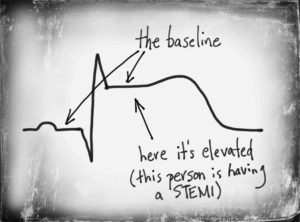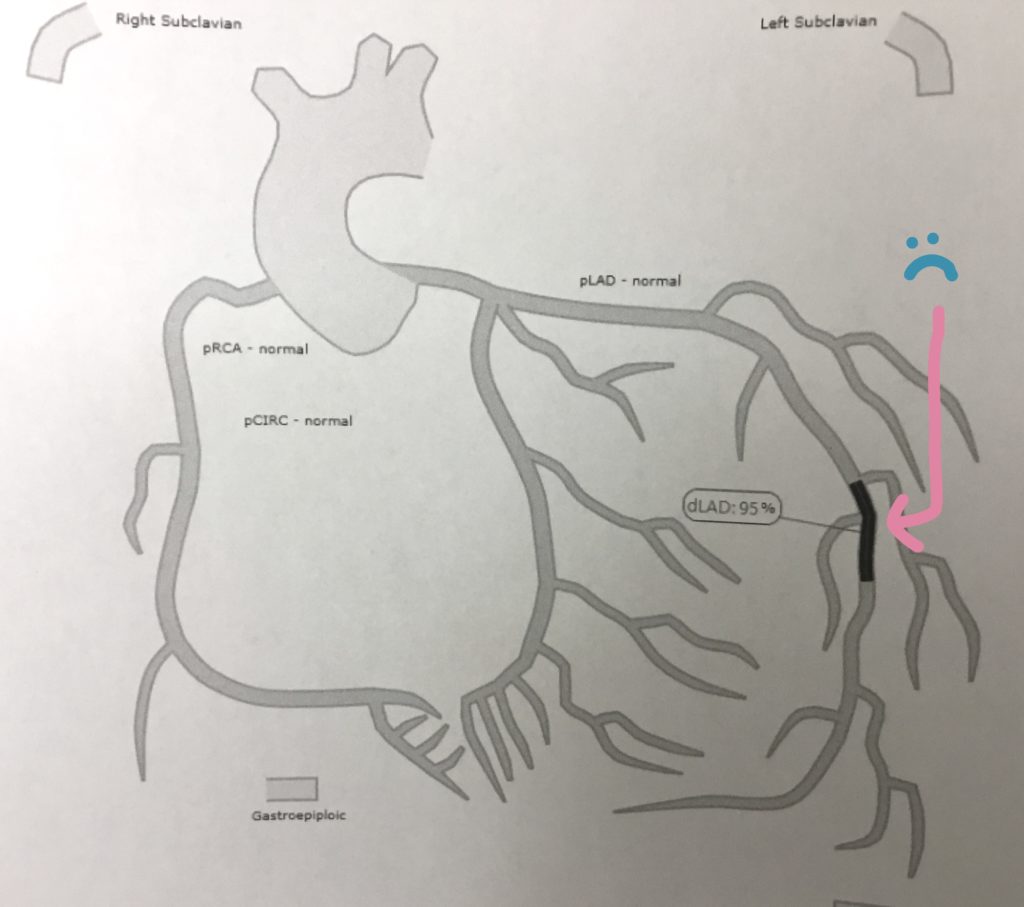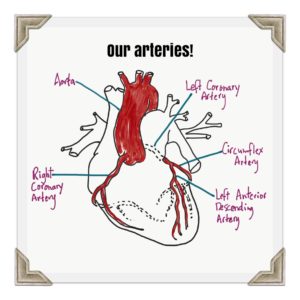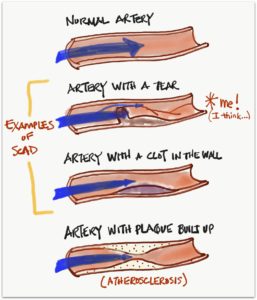So it’s now Day 5 (with Day 1 being the day that I had the heart attack). Before we go too far, a bit of a recap. I had a heart attack. I went to emerg. I had tests. The bloodwork showed elevated levels of troponin which confirmed heart damage. I had more tests. An angiogram showed why it happened – not a buildup of plaque or gooky lard from the cake I eat (surprising, really…), but from a sudden rupture: SCAD (Spontaneous Cardiac Artery Dissection).
I went home with some instructions about my wrist (where the angiogram needle went in), and vague directions about resting and a promise that a cardiologist would call me. Fine. So I’m now sitting here analyzing the little info that I have.
Non-STEMI
After my 2nd set of blood tests came back I was told my the emerg doc that I had a non-STEMI. (Often written NSTEMI.) Here’s an overview of what it means:
- STEMI means ST-elevation myocardial infarction (heart attack)
- non-STEMI means non-ST-elevation myocardial infarction (duh)
- ST refers to the ST segment, which is part of the ECG heart tracing used to diagnose a heart attack. The ST that shows up on the ECG creates a specific appearance on the monitor. (see below)
- A STEMI shows up well on an ECG, my non-STEMI didn’t show up at all.
- A STEMI happens as a result of a complete blockage in a coronary artery. A non-STEMI heart attack is when an artery is partially blocked and blood flow is severely reduced.
- A STEMI attack carries a great risk of death and disability. A non-STEMI is less damaging to the heart.
- They like to write STEMI in CAPS.
- An ECG and an EKG are exactly the same thing. (EKG has been translated into German. Go figure.)

The photocopy
Looking at the printout of my arteries that I posted in my previous blog entry you can that the damage is in the dLAD. Here it is again:

Of course my first question was what the hell is dLAD??
Well, it’s the Distal Left Anterior Descending Coronary Artery. I obviously needed to know a bit more about arteries so that I could understand the photocopy better. Here they are:

The LAD is an important artery since it supplies over half of the heart muscle with blood. Of course it is! So the dLAD is:
- on the left side of my body (looking out at the world from my eyeballs)
- runs down the front wall of my heart
Second question is what does 95% mean?
Ok I know what 95% means …, but what does it mean in the context of SCAD? I believe it means that I had 95% blockage because of the SCAD. So only 5% of the blood was getting to my heart muscle. Yes?? I think so.
The Diagnosis
SCAD. I can never just SAY that in expanded notation. It takes me a LOT of thought to bring it forward in my chemo induced state of crappy recall. Spontaneous (not sudden). Coronary (not cardiac). Artery (not arterial). Dissection (not disaster). Say it with me: spontaneous coronary artery dissection. There.
What I know to be true about SCAD:
- it’s relatively rare
- it happens most commonly to women in their 40s and 50s
- 80% of the time the women are young, healthy and active with none of the risk factors that you would normally think of (like diabetes, high blood pressure, eating crappy food 24/7)
- there is no known cause – happens a lot after childbirth, doing extreme exercise, after lots of stress – but nothing definitive (NO WHERE can I find chemo listed in any of the literature as a cause)
- the symptoms are the same as those for any kind of heart attack (chest pain, rapid heartbeat, pain in arms / shoulders / jaw, shortness of breath, sweating, tiredness, nausea, dizziness)
- treatment is generally blood pressure meds and beta blockers (prevents clotting)
- there is a high risk of recurrence (oh shit.)
What Actually Happens in SCAD:
The artery wall has 3 layers. When a tear occurs, blood is able to pass into the innermost layer and get trapped there. In some cases a clot forms there. This trapped blood or clot starts to bulge inward, narrowing the artery and preventing blood from getting to the heart muscle. BAM! Heart attack.

Remaining Questions
So… the event happened. I’ve seen the needle and the damage done. But I still want to know:
– Is this because of the chemo? Or is it because I had just spent 30 min scraping 10cm of ice off of my hot tub? Or is it because I started exercising again?
– Can I continue with my Herceptin treatment?
– Why doesn’t a cardiologist call me? Can’t he/she see that I have so many questions? Calling me “within 4 weeks” doesn’t work for me. OMG!
And now back to my quiet, sedentary activities. Somebody pass me a chocolate.
